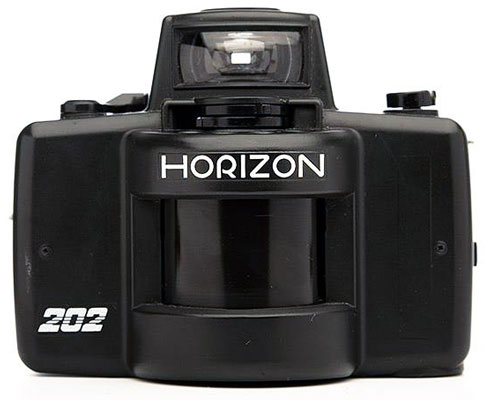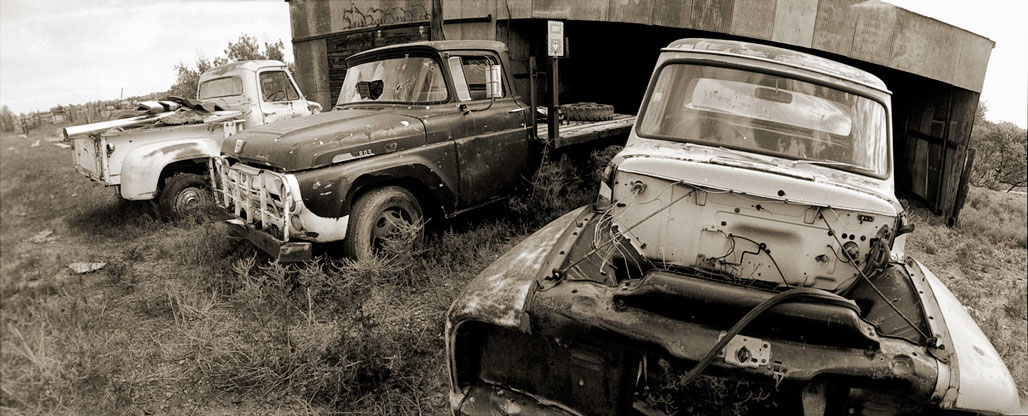Today’s Post by Joe Farace
Certain people have certain ways of focusing on things, and some arrange their lens to a pinhole in order to focus only on their goal. Others have a giant lens, and they take in the whole panorama. I was that pinhole kind of person.—Wendy Whelan
 I don’t think it was a Christmas present but once upon a time my old pal Jason gave me a Russian-made Horizon 202 rotating lens panoramic camera as a gift.
I don’t think it was a Christmas present but once upon a time my old pal Jason gave me a Russian-made Horizon 202 rotating lens panoramic camera as a gift.
I’ve always been fascinated with wide-screen images and really enjoyed looking Jeff Bridges’ first (and second) book of panoramic images that he shot on the sets of some of the movies he’s appeared in using a 35mm Widelux camera.
Mr. Bridges’s work inspired me to shoot some film using the Horizon 202 panoramic camera taking exposure readings for this scene using a Gossen hand-held meter. The Horizon is an all-mechanical camera, no batteries included, no batteries needed and like Bridges’ Widelux has a rotating lens. The cameras were manufactured by Krasnogorsky Mechanicheskiy Zavod in Krasnogorsk, Russia, better-known for producing a line of Zenit cameras and lenses. The main characteristic of this camera is its rotating lens that captures a 120 degree panorama after the shutter button is pressed.
Working with a 35mm camera that has a 28mm focal length lens and a 120-degree angle-of-view that’s captured on a 24 x 58mm film format changes your way of looking at images and framing them. When combined with what must charitably be called only an “approximate” view as seen though the viewfinder and no focusing capability—I guess that’s tough to do with a moving lens—the experience brings spontaneity and maybe even a little inspiration into your photography. These days you can find them on eBay for between $200 to $250 depending on condition and where they’re located in the world. I don’t think there’s a cheaper way to get into panoramic film photography; maybe the Holga 120 Pan Panoramic Medium Format Camera. If you have time, check out my video on the subject of inexpensive panoramic film cameras on my YouTube channel.

How I Made this photo: I hadn’t shot much film during the time I owned the Horizon but did manage to photograph some cars and even made some glamour portraits using it. Here I was taking exposure readings using my Gossen hand-held meter and making wide-screen photos. After having the Kodak T-Max 400 film processed, I hand trimmed the negatives and placed the strips in one of the film holders that Epson included with the one of their flatbed scanners. After scanning and tweaking the images in Adobe Photoshop suddenly I’m Jeff Bridges, Nash Bridges, Brooklyn Bridges or one of those guys.
Some time after shooting the above panoramic image, I upgraded my panoramic photography from shooting with the Horizon by purchasing a lightly used 35mm Hasselblad XPan that with it’s interchangeable lenses —there are three in the system, I owned two—built-in metering and auto exposure capabilities is much easier to use. The XPan’s panoramic format measures 24 x 65mm but it also has a 24 X 36mm mode and is switchable between these modes as many times as you like on a roll of film, except when there’s only space for one 24 x 36 mm frame on the roll. Oh yes, it shoots backwards. After loading the film, the entire roll in transported onto the right-hand spool and then moves the film backward into the cartridge as you shoot. When you finish the roll there’s no need to rewind.
But for reasons that make me sad, I no longer own either the XPan or the Horizon 202. I keep looking at used Horizon’s on eBay, so maybe some day…
 If you enjoyed today’s blog post and would like to buy Joe a cup of Earl Grey tea ($3.50), click here.
If you enjoyed today’s blog post and would like to buy Joe a cup of Earl Grey tea ($3.50), click here.
Along with photographer Barry Staver, Joe is co-author of Better Available Light Digital Photography with new copies are available from Amazon for $21.50 and used copies starting around five bucks.